Objective Zones and Fatigue Mgt.
As the rules exploration continues on the plane to SFO I’m pondering a hint from a play tester regarding fatigue management.
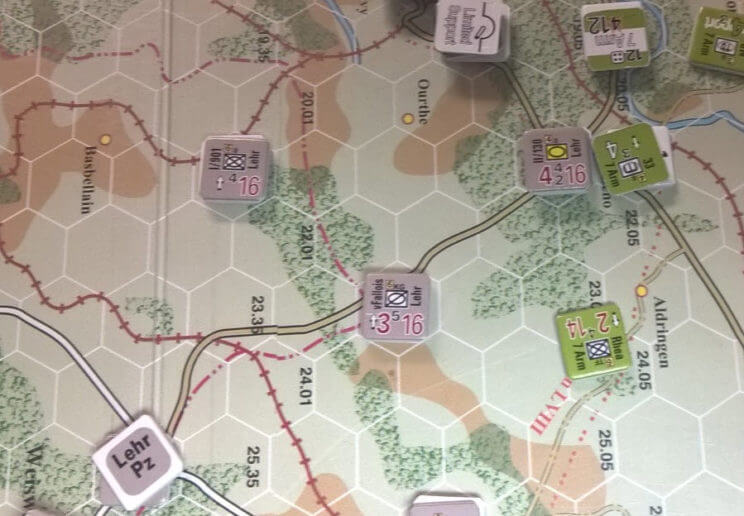
The allusion to a hint shared seems to my mind, to suggest that there is a distinct linkage between Objective Zones (where you may attack during an Activation) and Fatigue management. Namely that where you place objectives and how you will engage them is important. Well of course you may rightly wonder how can an objective inflict fatigue? Of course they cannot do so directly, however your choice of objective (the location zones of your attacks for a given formation activation) will drive the types and number of attacks or engagements you will conduct in a turn.
The manner in which you execute on these objectives is going to directly impact your fatigue levels. Hopefully you now see the linkage!
[side note, Obj chits are placed on the map on a enemy unit, this removes, and alleviates all that order writing Dean Essig is so fond of, that you might have to do if we were playing a lower level tactical system such as TCS].
Fatigue, how am I so tired?
Fatigue is accumulated via the execution of one or more types of actions in a turn;
Placing an Objective chit and not engaging units ( using ranged fire) and not barraging. Conducting the above and an engagement (1), numerous engagements and shock attack (overrun) or making several attacks and no engagements. Each of the above has a % chance of increasing fatigue, ranging from 17 % to 50%.
I’m fatigued so what?
This accumulated fatigue has an impact upon SNAFU [ quality of your activation] this is all it affects, not movement rates, nor combat! Which may seem like a nominal effect, to you as you read this without having read the rules. The SNAFU roll however is going to drive your volume and cadence of activity in a given turn, the total Fatigue # is subtracted from your roll on the SNAFU table and low rolls are bad! So once again in a clean, simple manner just as in our last post regarding HQ, Supply and Combat Trains we see a, dare I say, elegant way to model the concept of the cadence of operations inherent to all military organizations.
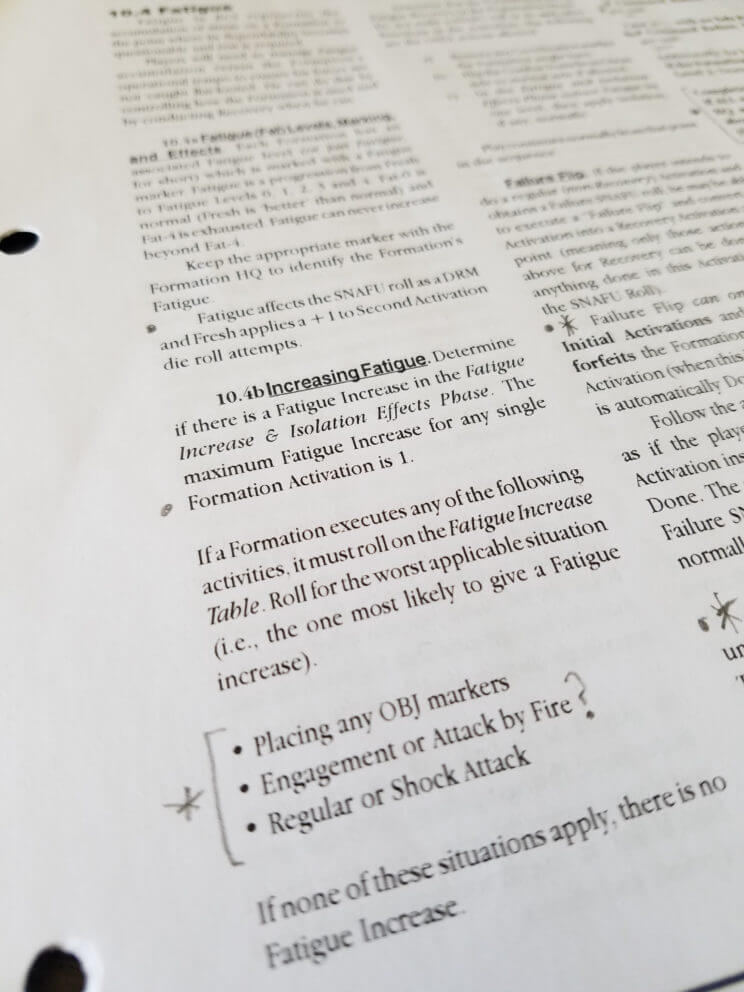
Objectives hexes, objective zones & HQ’s what are they good for?
Objective hexes and the surrounding two hexes create a zone where units are eligible to conduct combat against the enemy in a given activation. Engagements however don’t require such an Objective zone in order to be used during the formation activation. We can talk about the difference between engagements, attacks, and other forms of combat in another post. The distinctions are real, the impact on the enemy different and the cost in terms of fatigue significant.
Where the HQ ends up in its movement, will limit the range of air and arty attacks as they must be placed within the HQ command radius.
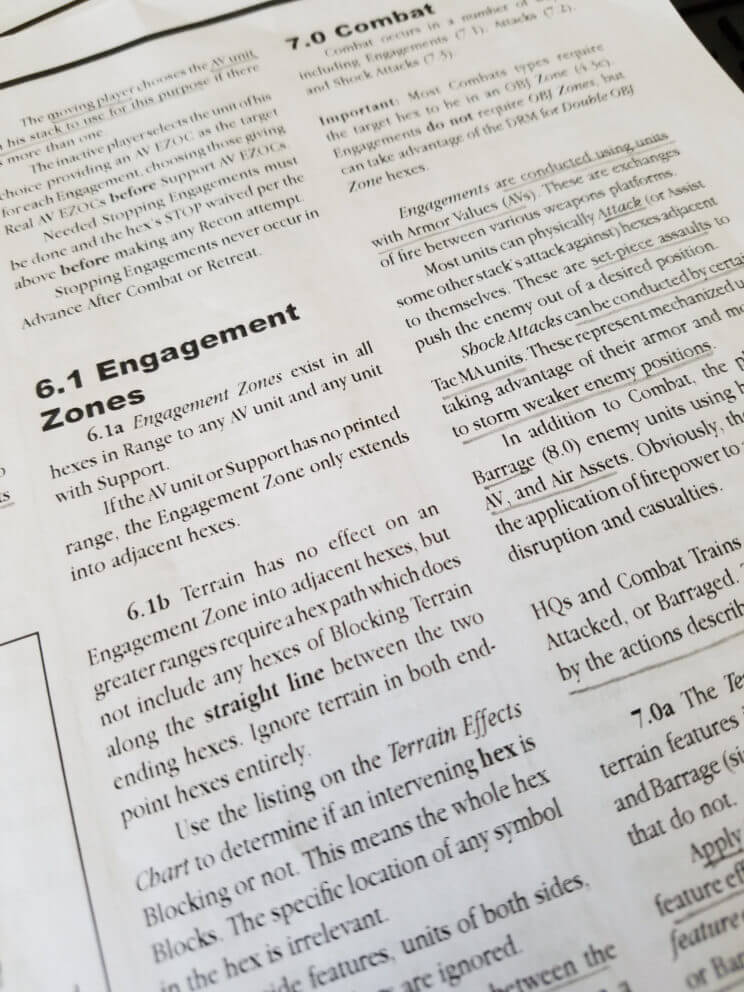 Optimizing your fatigue bang per buck
Optimizing your fatigue bang per buck
If suitable engagements can force a retreat or clear a road then using them is advised as the chance of fatigue accumulation goes down versus one or more attacks. But if more than one attack is planned, the formation should maximize it’s impact in the given formation activation in order to take advantage of the likely increase in fatigue when rolling in the 50% case. i.e, all in or nothing!
Maximize the use of assists (supporting units), choose air/arty and factor in the traffic consequences of the activities also.
Because these various combat types can be used at any point in the activation, true route clearing by lead elements can be achieved for break thru actions. This means that once you have identified your targets, ensured that the route is supplied and your men can indeed attack, you are still going to want to ponder the best means of achieving your goal so as to minimize fatigue accumulation, so you can continue to exploit your success in subsequent activation.
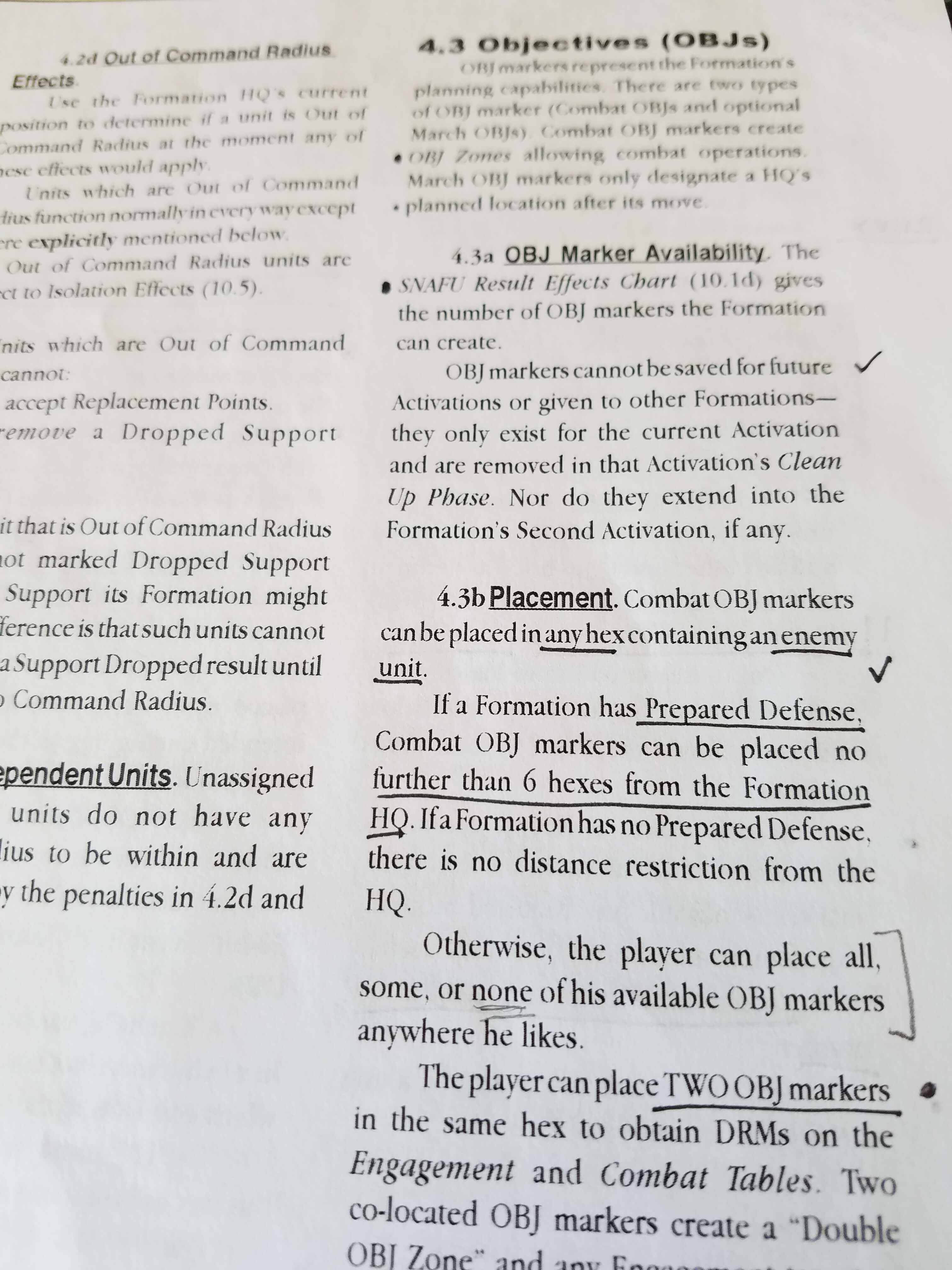
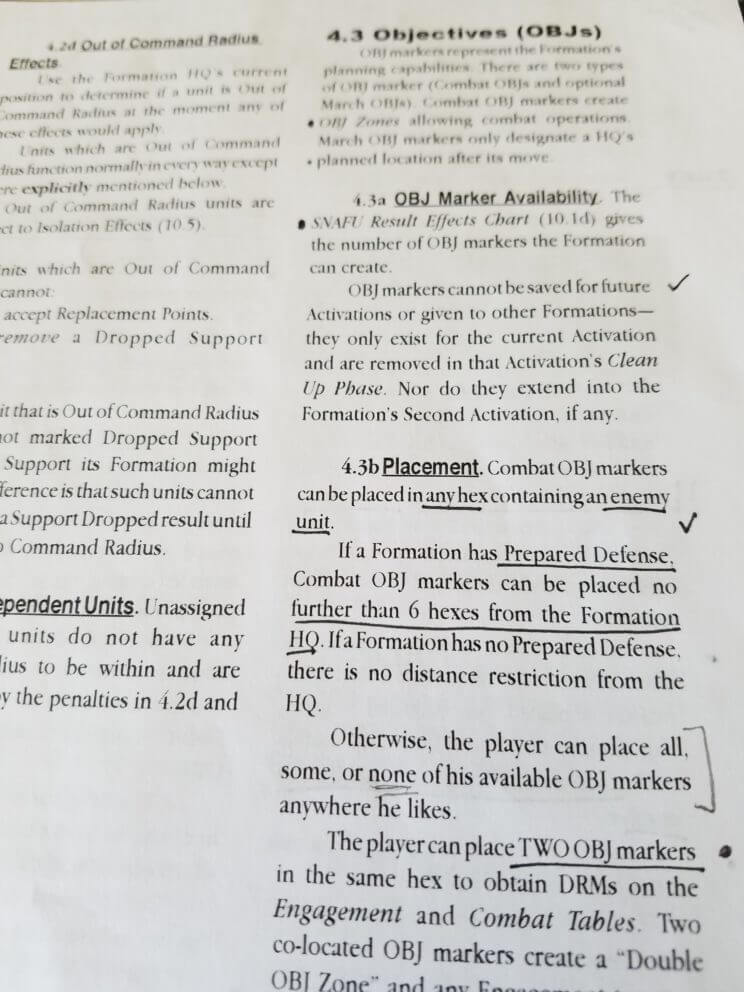
This sounds like a game I’d have been dying to play in another life. I’ll have to just live vicariously through the Big Board now though.